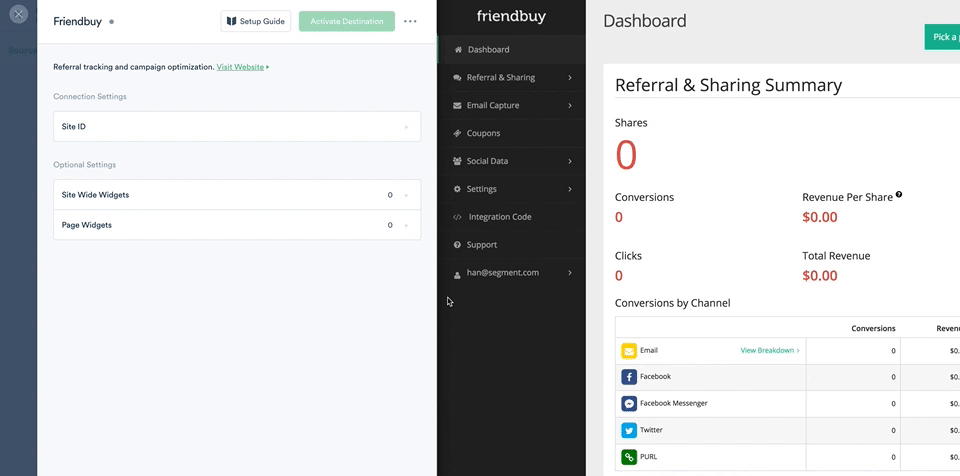The peak of a user’s enthusiasm for your product often comes right after your product has — for the first time — delivered on the value they signed up for.
This is the moment you grab their attention. Don’t be subtle about it. Pause everything and suggest they invite others who can benefit from your product.
Here’s an example: A user downloads a habit tracking app with the goal of quitting smoking. After one week of successfully sticking to their daily goal, they receive a badge, and the app lets them know that this is an important milestone. Smokers who can go one week without smoking are nine times more likely to successfully quit permanently than those who don’t make it just one week. That’s huge.
And now’s when you offer them a frictionless way to refer friends. They’ve been given proof that your product is valuable, and they have a reason to excitedly share it with others.
Note that getting users to refer will be easier if bringing others in improves the original user’s product experience. Startups with the best referral rates implement product features to capitalize on this psychology. For example, using our smoking example, bringing in a friend could unlock a Friend Accountability feature within the app. Now there’s someone else to track your progress and hold you accountable.
Using Segment Personas, you can easily create a custom audience of users who’ve reached your magic moment. And you can trigger a referral prompt so you strike while the iron is hot.
This recipe assumes you have Segment installed, and that you’re tracking purchase events. If not, see our documentation here.
First, you’ll need to identify your magic moment. Sometimes it’s obvious, and sometimes… not so much.For example, if you're Warby Parker (who ship glasses to people’s homes), the magic moment is likely right after someone places their glasses on and feels that they fit great and make them look good.
Unfortunately, you can't track that moment digitally.Instead, you can use a couple of proxies for identifying their happiness:
Proxy 1: When people pay for you again. If they come to buy again, you know you have them genuinely hooked. That’s your referral intervention point.
Proxy 2: Look at your cohort analysis. Using a tool like Mixpanel or Amplitude, you could perform an analysis of how long users stay engaged on average. You might find that 40% of your users quit the app after month one, and another 30% leave after the second month, but 90% of users who make it to the third month stay at least a year.
Bingo. That’s your magic moment window, and around that time is when you should prompt users to refer.
Once you’ve determined your magic moment, Segment helps you create your audience based on that. For the example below, we’ll target users who cross the three month threshold:
Log into Segment
Navigate to Engage > Audiences.
Click New Audience.
Then set up your configuration, as shown below. Here’s what we’re telling Segment: Find all users that have triggered the Page Viewed event at least once ~ 3 months ago, and at least once within the last 7 days (meaning they’ve been active over the course of the last 3 months).
 Made by Demand Curve
Made by Demand Curve




